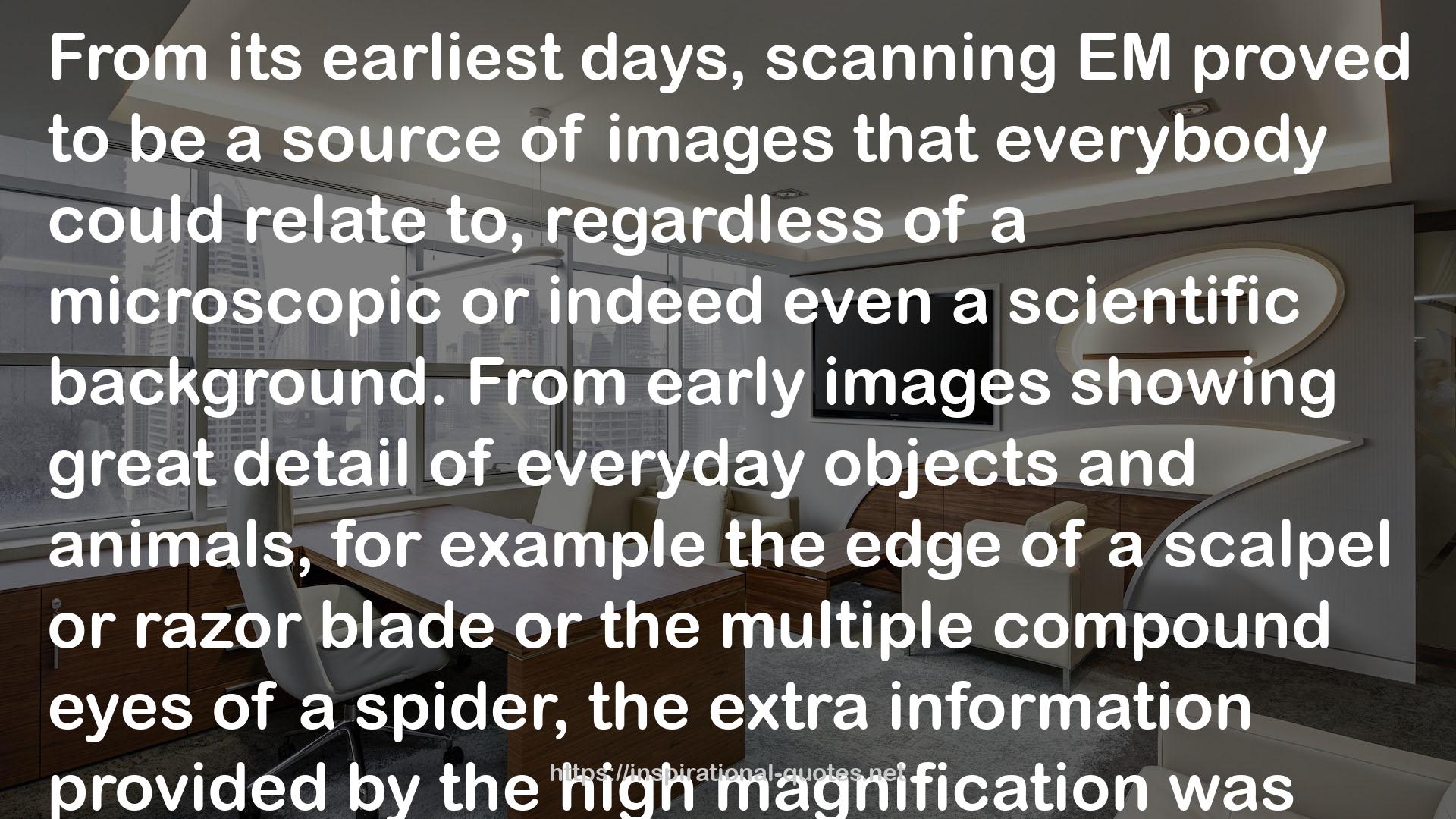" From its earliest days, scanning EM proved to be a source of images that everybody could relate to, regardless of a microscopic or indeed even a scientific background. From early images showing great detail of everyday objects and animals, for example the edge of a scalpel or razor blade or the multiple compound eyes of a spider, the extra information provided by the high magnification was instantly apparent, grasping the attention of the general public in a way that transmission EM images did not (Figure 19). Today, images of bacteria, stem cells, and tumour cells are a regular sight in TV news, documentaries, newspapers, and magazines, usually brightly coloured. False or pseudo-colouring of scanning EM images is useful for highlighting specific features, as well as increasing the overall impact, which can sometimes be a little on the garish side. "
― , Microscopy: A Very Short Introduction
